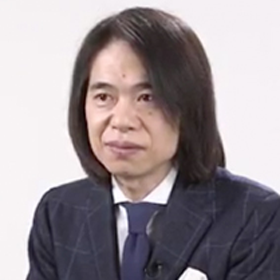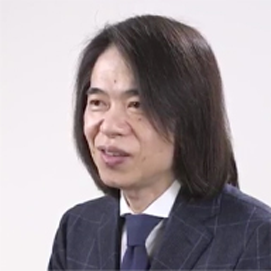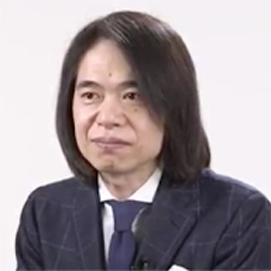Key person interview

I am very happy to have increased
Department of Diabetes Endocrinology and Hematology Associate Professor
Professor Toru Kiguchi
Question 1. Regarding treatment for relapsed or refractory diffuse large B-cell lymphoma, please tell us about your impressions of the clinical trial and the actual treatment.
In clinical trials for relapsed or refractory diffuse large B-cell lymphoma (hereinafter referred to as "relapsed or refractory DLBCL"), 120 mg of bendamustine (generic name for TREAKISYM) was not without concern. However, when it was actually administered in clinical trials, it was found that it could be treated safely, and the efficacy was very good, so I got a good impression. Therefore, when (BR therapy) was approved, to be honest, I was very happy, and thought that this would increase the treatment options.
On the other hand, when it was actually administered to patients, other hematologists had no experience using it (in clinical trials), so there was a gap between my perception that it could be used safely and the other doctors. So it was a little difficult for me to understand.
Question 2. How do patients differentiate between BR therapy *1 and PBR therapy *2?
I believe that BR120, a BR therapy, can achieve complete remission. Also, I think that it is very effective in cases after autologous transplantation, and in other cases such as cell-of-origin GCB type.
PBR therapy, on the other hand, is easy to use for the elderly and frail patients because the dose of ABC type and bendamustine (generic name of TREAKISYM) is small.
*1: BR therapy: bendamustine (TREAKISYM ®) with rituximab
*2: PBR therapy: Combination therapy with two BR therapy and polatuzumab vedotin
Question 3. Please let us know your impressions after actually trying out the prescription.
I tried administering it, and although it was possible to administer it for the first time, when I repeated the cycle, I felt fatigue and a little stronger. However, patients prefer outpatient outpatient treatment, and there is no other salvage therapy that can be administered on an outpatient basis for relapsed or refractory DLBCL. In that respect, unlike other regimens (treatment plans), there are BR therapy and PBR therapy as treatments that can be actively performed on an outpatient basis.
Question 4. With the spread of the new coronavirus, please tell us what you are careful about during treatment and what patients say.
Regarding the treatment of follicular lymphoma, the Japanese Society of Hematology has announced that if the treatment can be postponed, it will be postponed.
For myself, follicular lymphoma is mainly treated with rituximab, and currently, BR therapy is mainly used for those with a large tumor burden, but the immune system is considerably weakened and the corona becomes more severe. is a concern, so if there are no adverse events or complications, treatment is postponed as much as possible.
On the other hand, some patients, even though they have been diagnosed, are very anxious about choosing not to be treated. I'm convinced that I can't do it, or on the contrary, I'm going to talk about the dangers of being infected with corona with treatment centered on rituximab.

Question 5. What kind of impact did corona have on the site of treatment?
Patients are still nervous about the coronavirus, so when they hear that the treatment will make the coronavirus more severe, I think that in many cases they will accept it obediently.
Since the introduction of the Omicron strain, patients receiving rituximab have been concerned about aggravation of corona infection, but fortunately they did not develop aggravation. It seems that this is due to the effect of having been vaccinated several times in the past, and the fact that the Omicron strain is not so severe.
Question 6. Has there been a change in treatment since bendamustine (TREAKISYM) was listed in the guidelines as an initial treatment option?

Even when BR therapy became available, R-CHOP therapy was also used at first, but now, not only in my own facility, but also in Japan, most blood doctors are using BR therapy. , or GB therapy (combination therapy of obinutuzumab and bendamustine (TREAKISYM)).
Question 7. How do you feel about the time to FL recurrence and the number of patients compared to before?
Recurrence in patients with follicular lymphoma after bendamustine (generic name for TREAKISYM)-based therapy, BR, and GB therapy is almost unheard of, to the extent that it feels like a world apart from before. died. In fact, how we know this is that clinical trials of recurrent FL cases are underway, but there are no recurrence cases and we are unable to enroll the cases. Even if we try to enroll patients nationwide, there are few patients with relapsed follicular lymphoma, and I think it can be seen from the fact that it is difficult to enroll patients in clinical trials.
Question 8. Has there been any change in the position of bendamustine (TREAKISYM) in the treatment of FL recurrence?
I think that follicular lymphoma itself can be divided into two groups, including cases that respond fairly well to BR therapy, and cases that do not respond at all, and no effect is observed. For the group that does not respond at all, for example, if they are treated with BR therapy, they will choose a treatment with a completely different regimen, but if they are treated with BR therapy first, the group of patients who responded will not relapse immediately and will continue for several years. It will recur after a while, so in that case, we will use BR therapy again in the form of retreatment.
Question 9. What is the significance of BR therapy in the treatment of FL recurrent patients?
Other than BR therapy, I think that treatment and regimens centering on CHOP therapy will be used, but if anthracycline anticancer drugs such as adriamycin are added, they will cause cumulative toxicity in the heart. And, unfortunately, follicular lymphoma is currently an incurable disease, so we prioritize the ability to continue treatment for the patient in the long term. I think that it will be a high choice because it has a sufficient period of time and no cumulative toxicity.
Question 10. Please tell us about the side effects that you are most careful about.
The primary concern is lymphopenia, opportunistic infections, cytomegalovirus infection and Pneumocystis pneumonia. There are a great many cases that complicates such things, and once it develops, it may become severe. In fact, even at our hospital, unfortunately, there are patients who have died, so we are paying particular attention to opportunistic infections.
Another common side effect is vascular pain. It is difficult to deal with vascular pain.
Question 11. What changes have you seen since the liquid formulation was launched?
The profile of side effects does not change due to the change in dosage form, but when I asked the staff about the change in dosage form, for example, according to the opinion of the dispensing pharmacist, after dissolving before, 3 We had to worry about the time required to complete the administration of the drug to the patient within an hour. It is said that they had a lot of fun.
Also, from the nurse side, at our hospital, we put the dispensing time on the label. According to the established procedure, it used to be administered in 3 hours, but now it is a liquid formulation and it is administered in 6 hours. was given.
